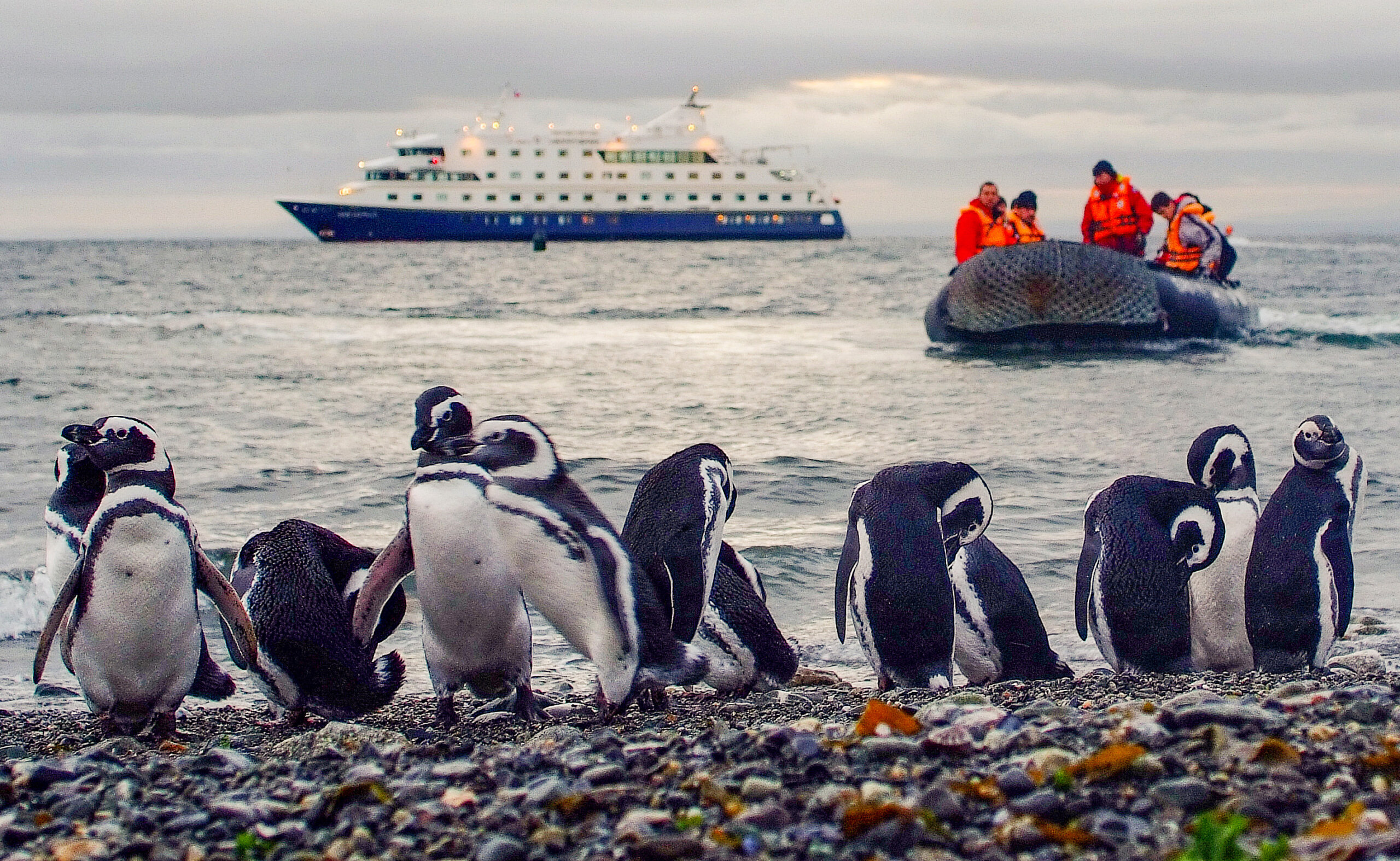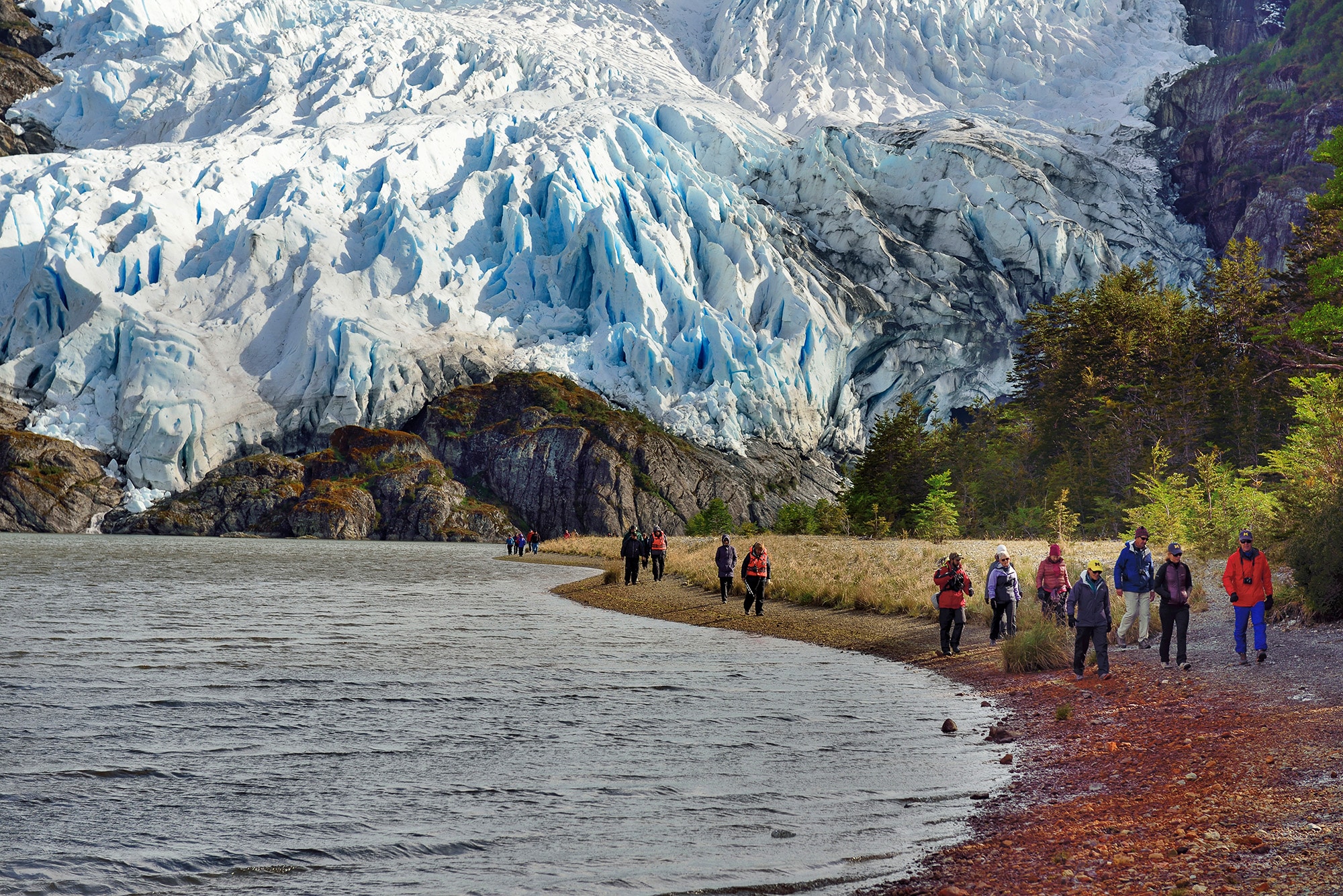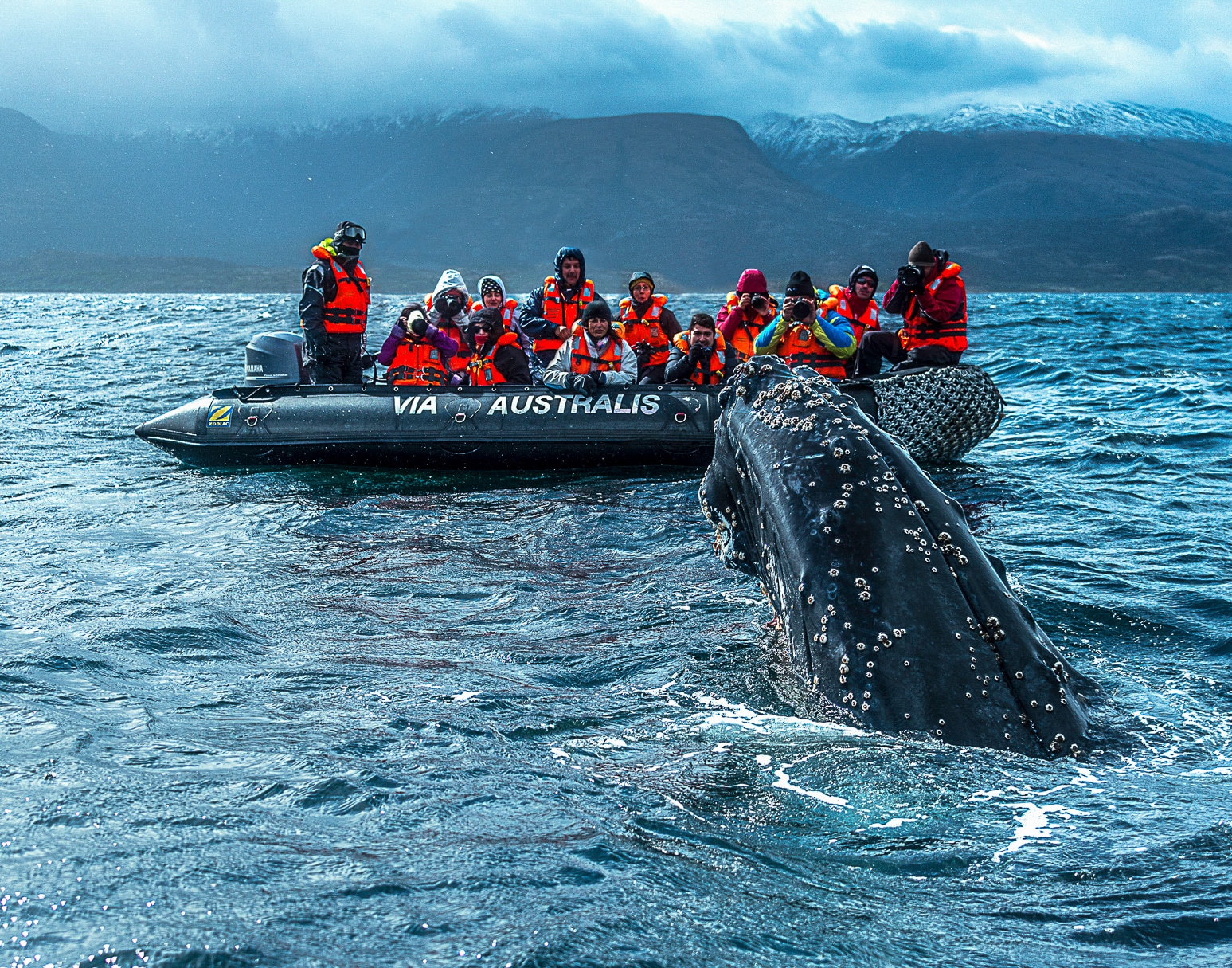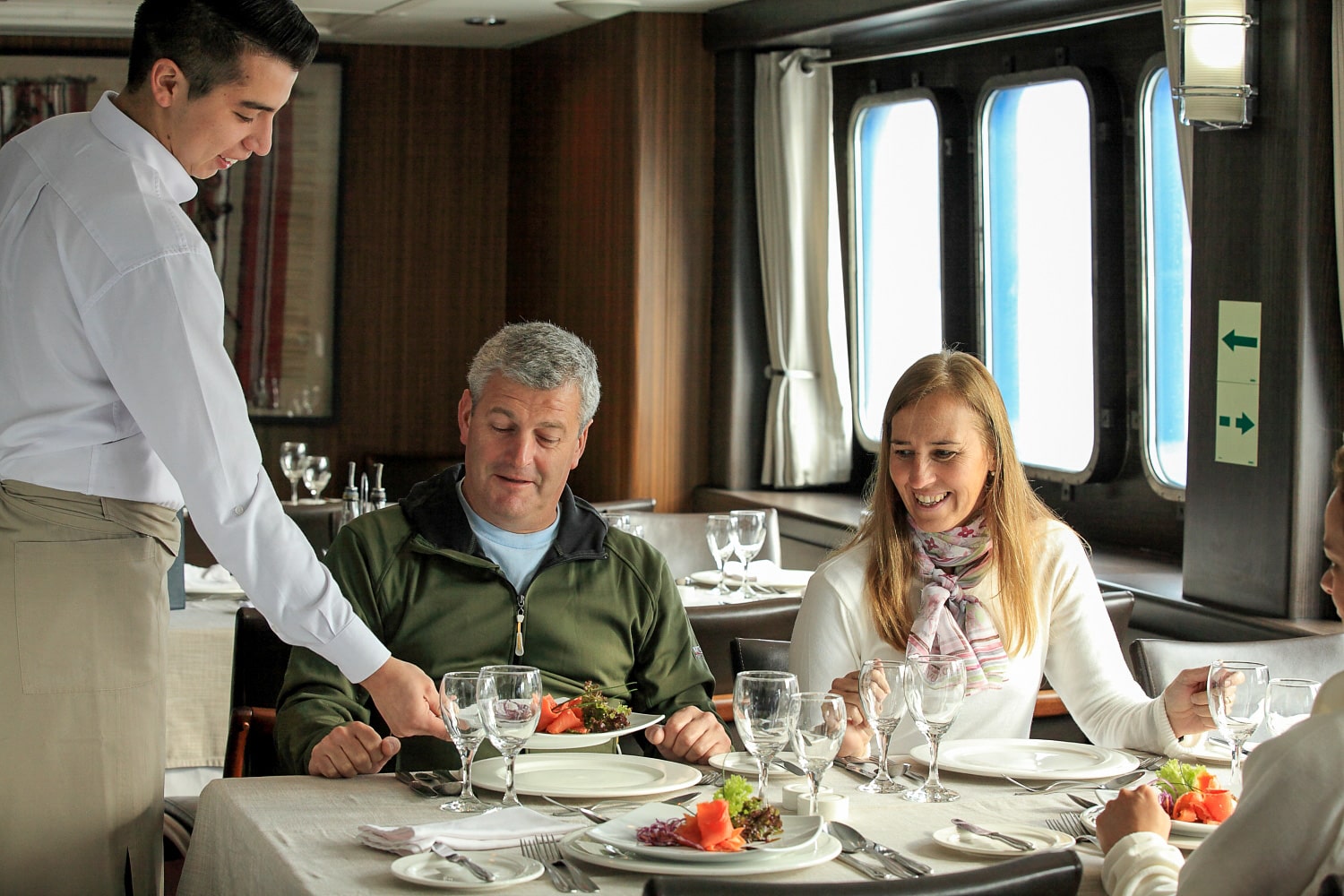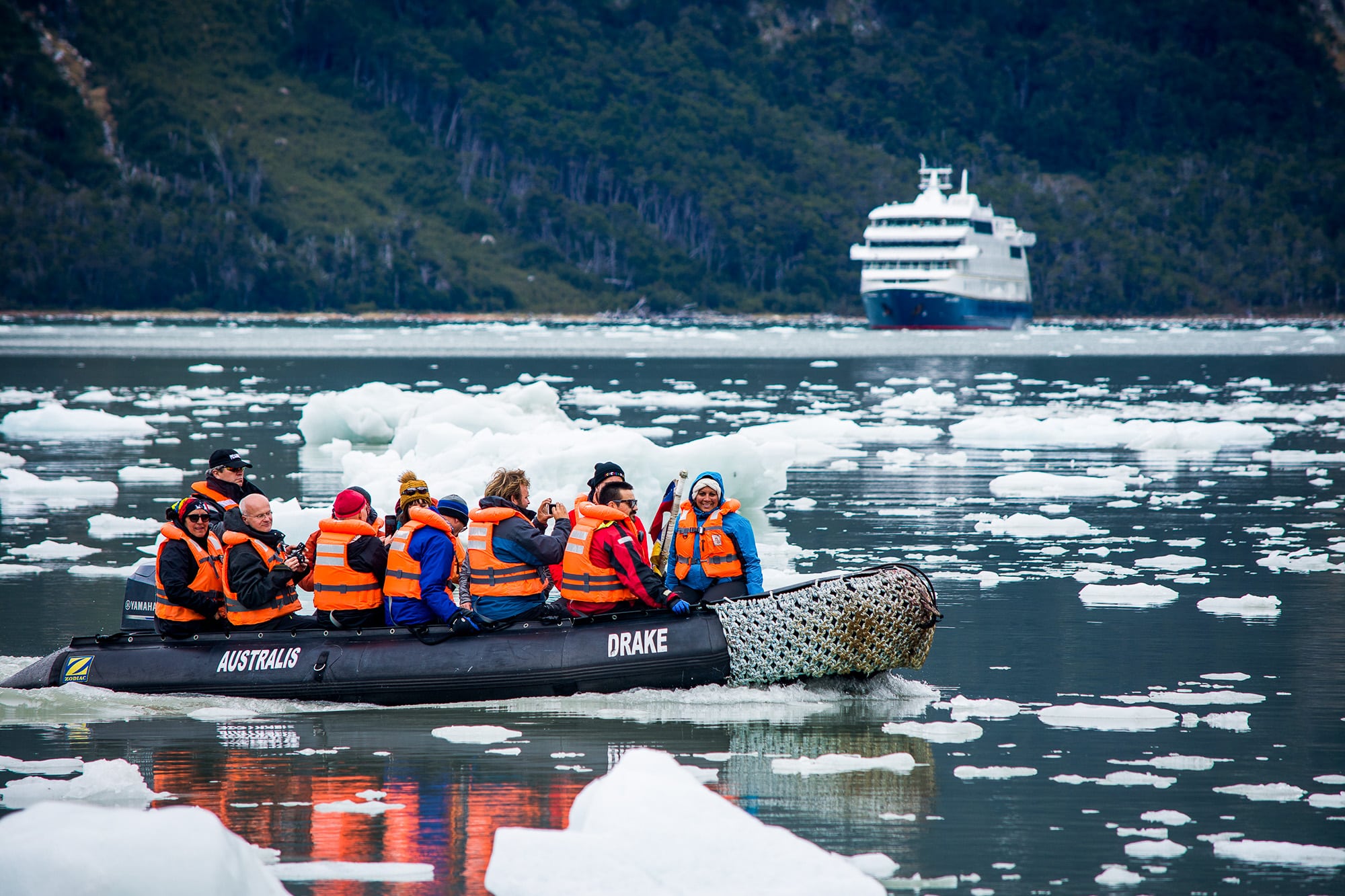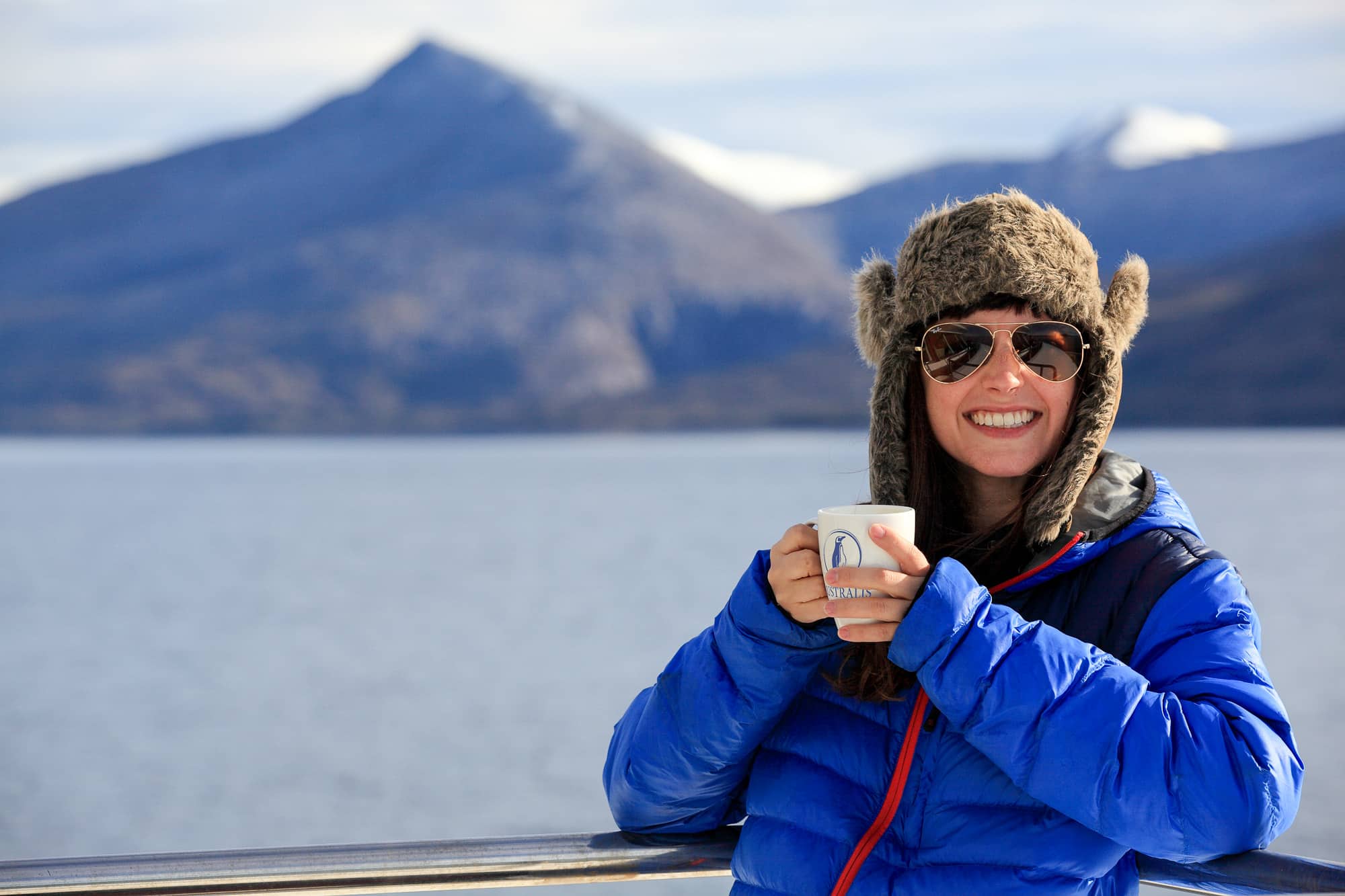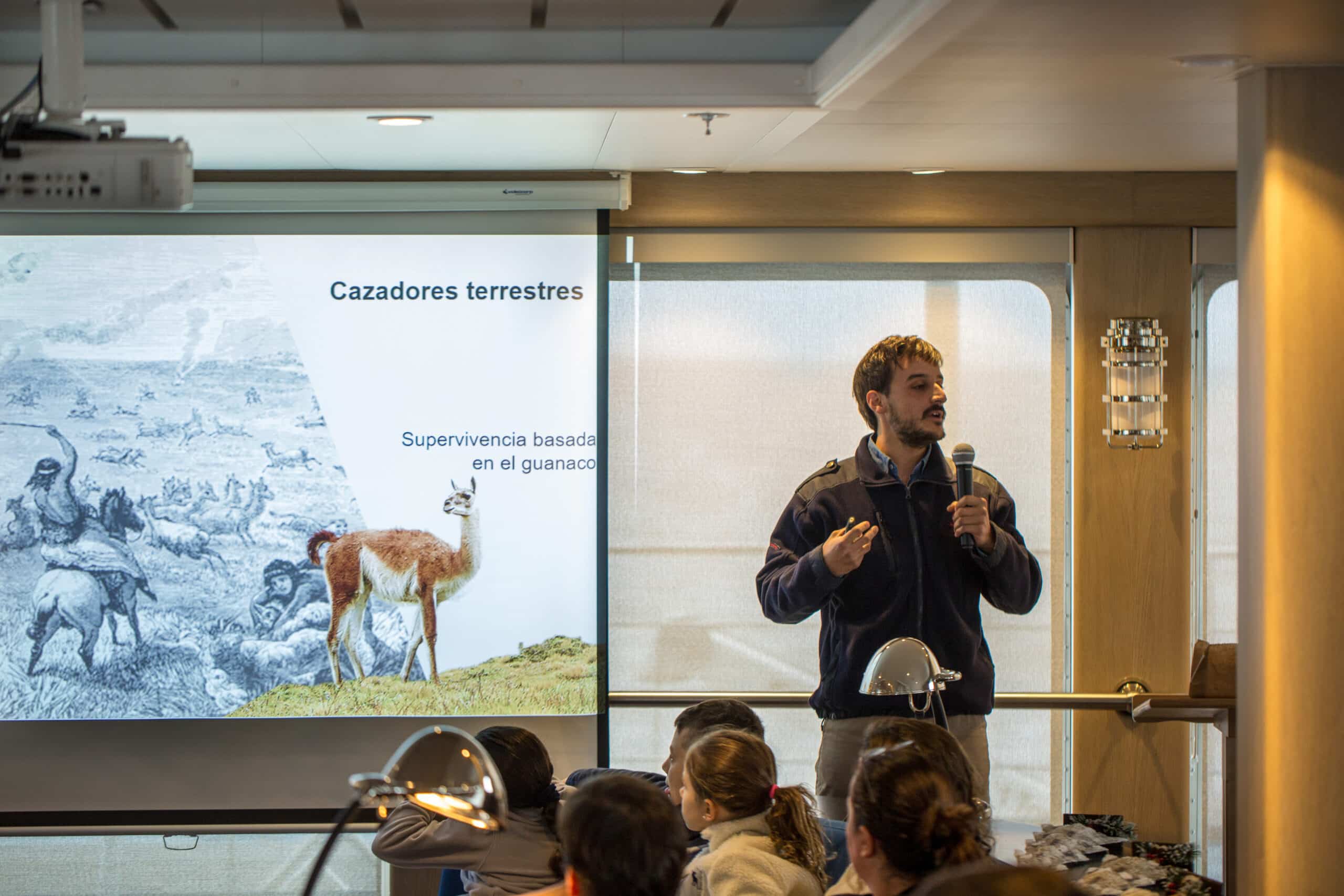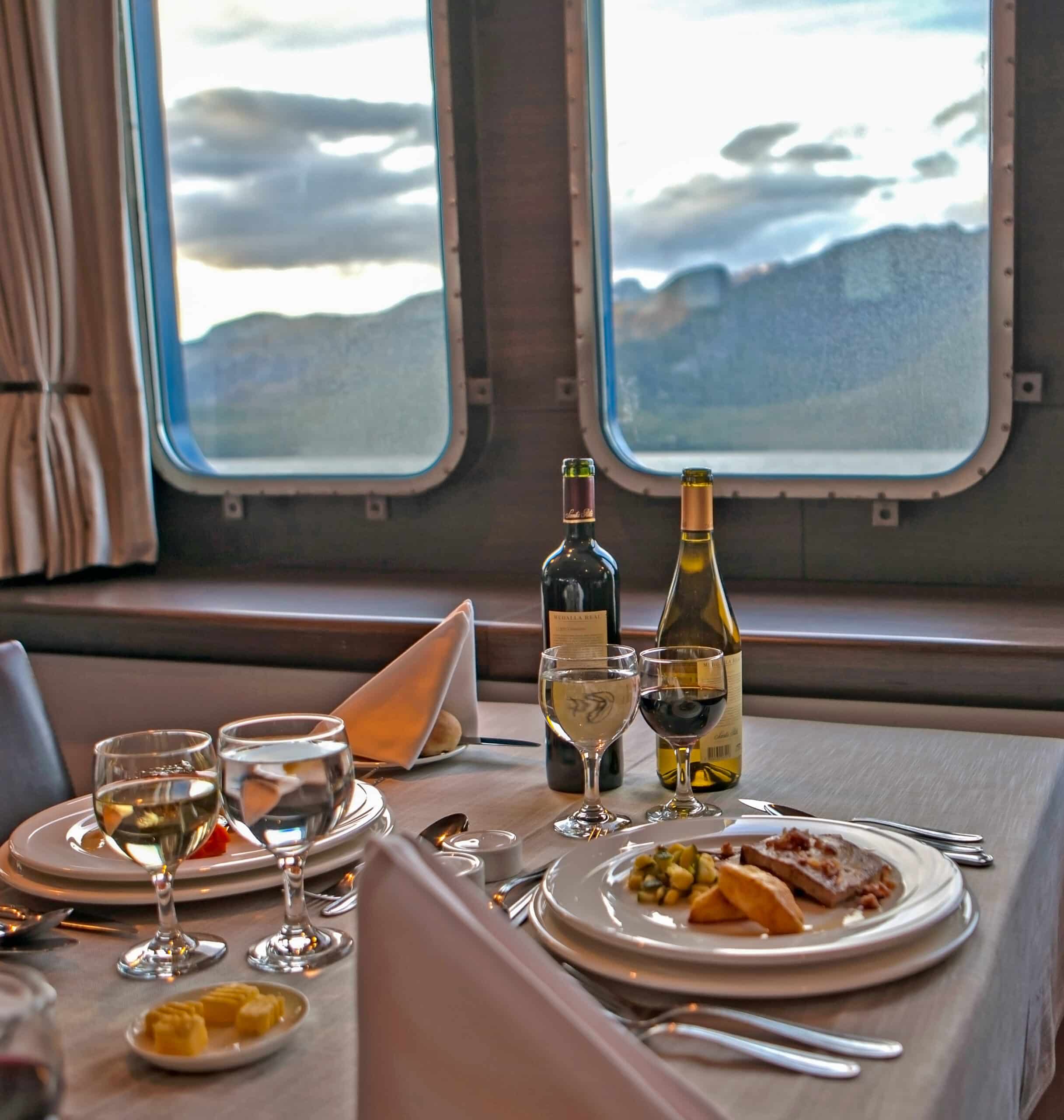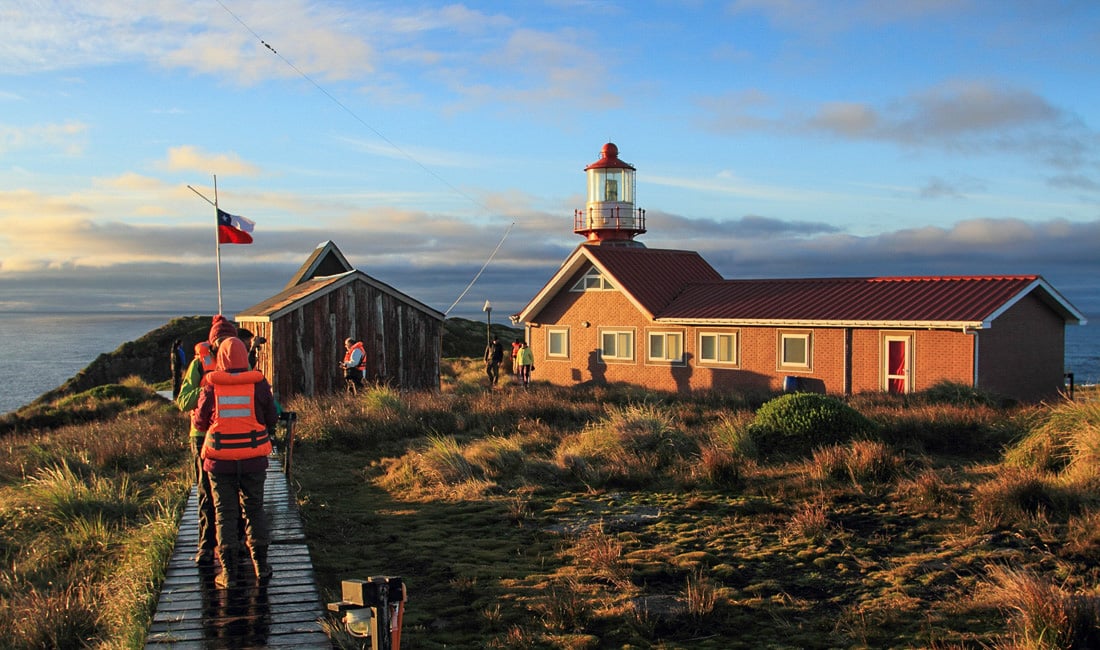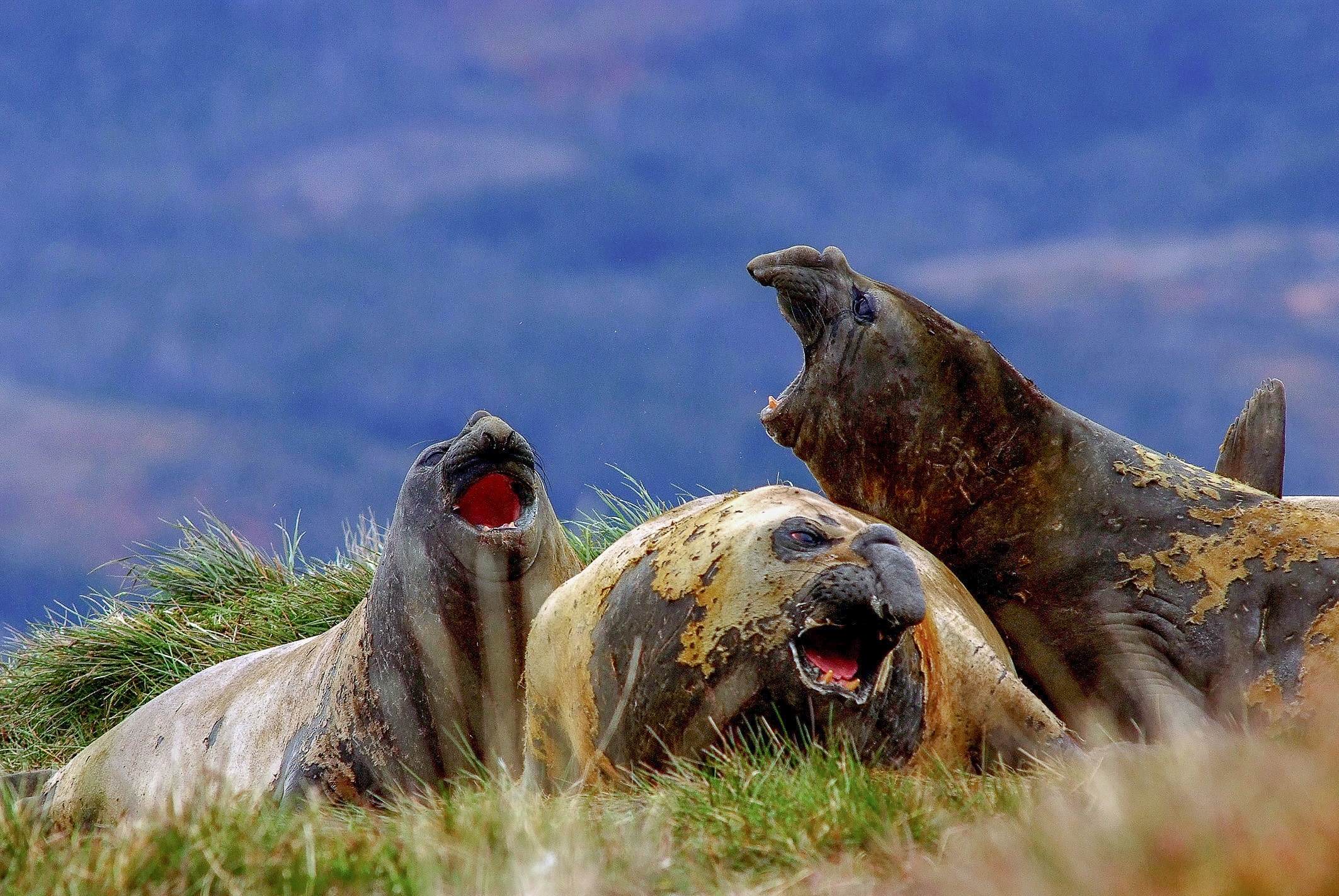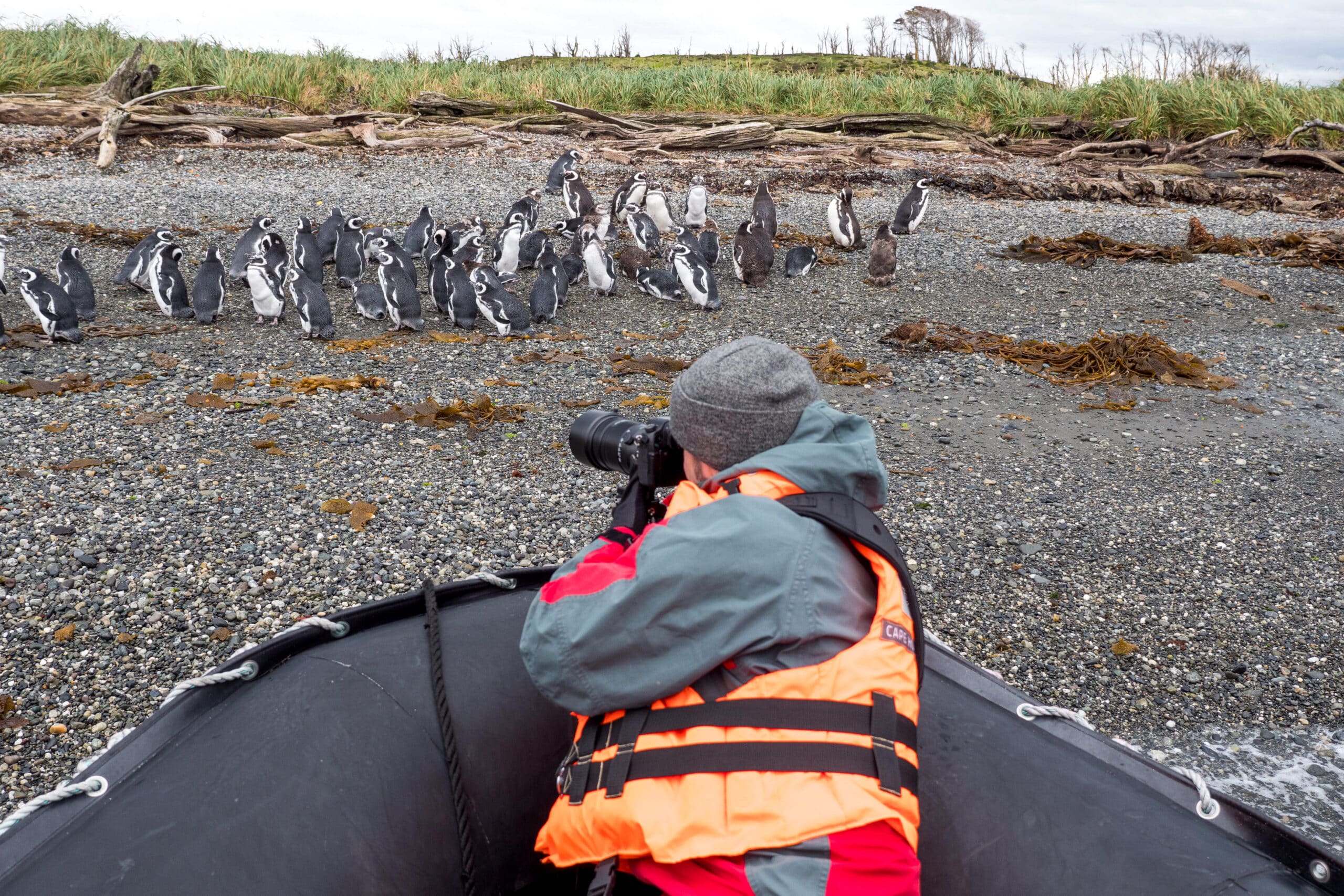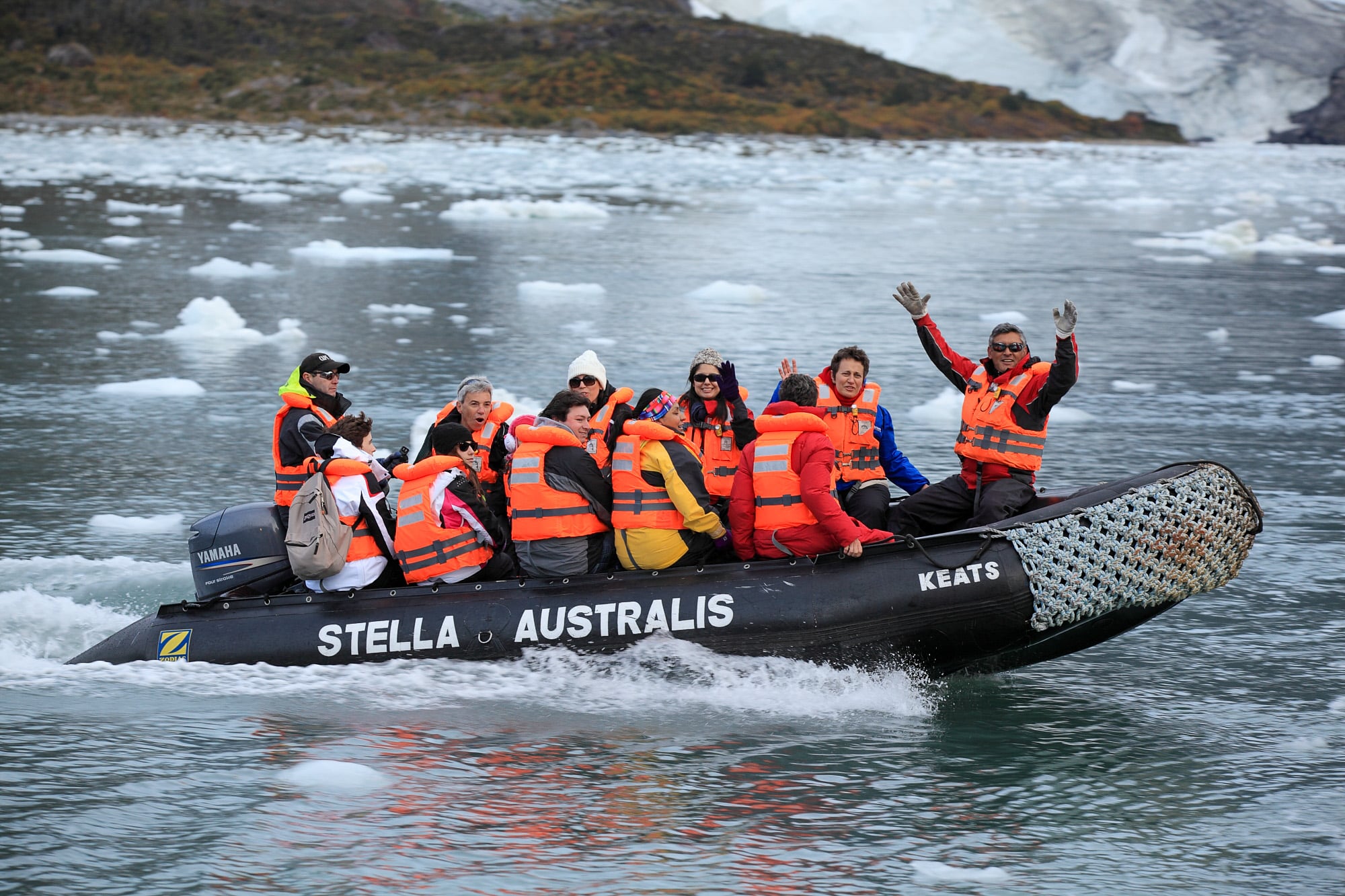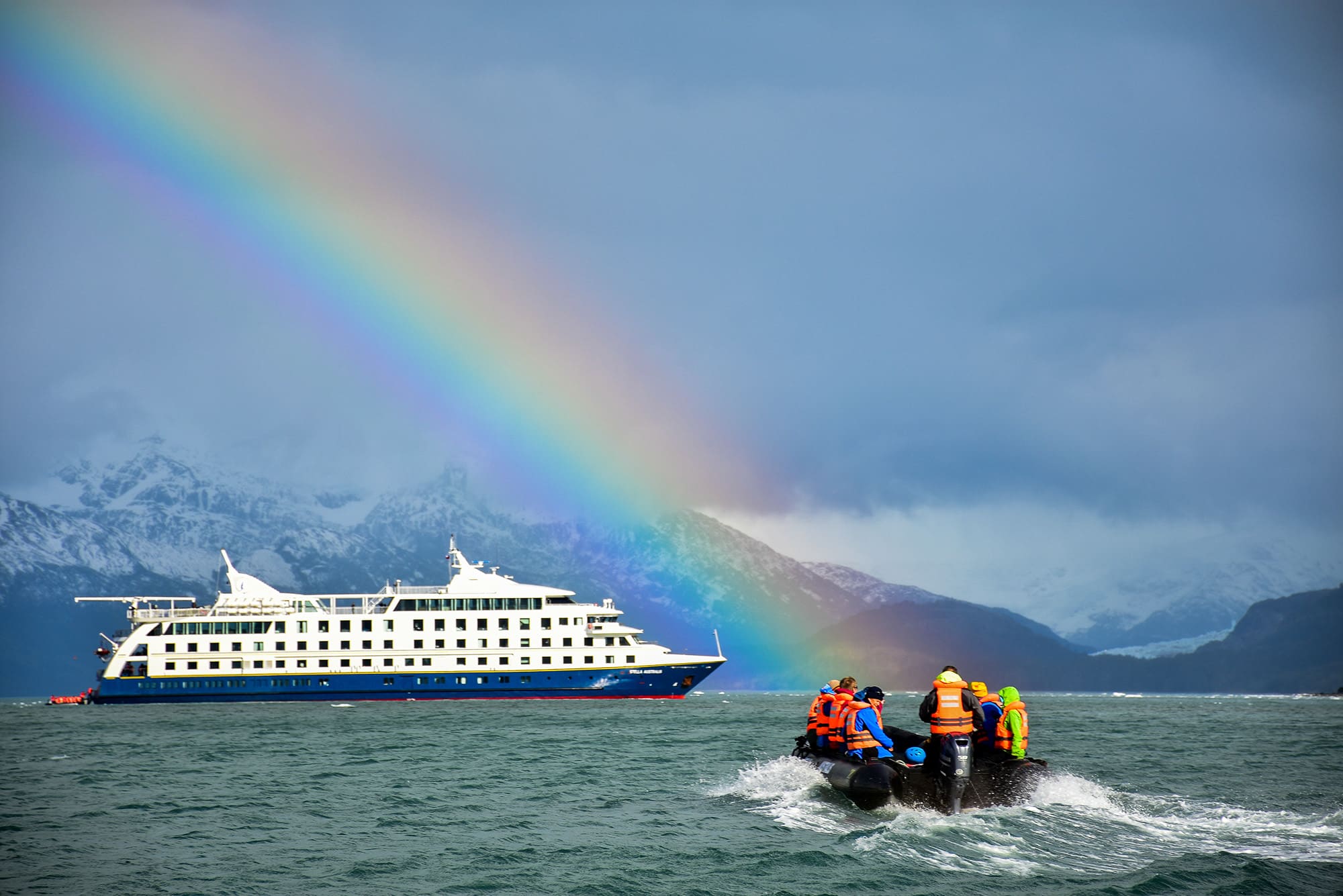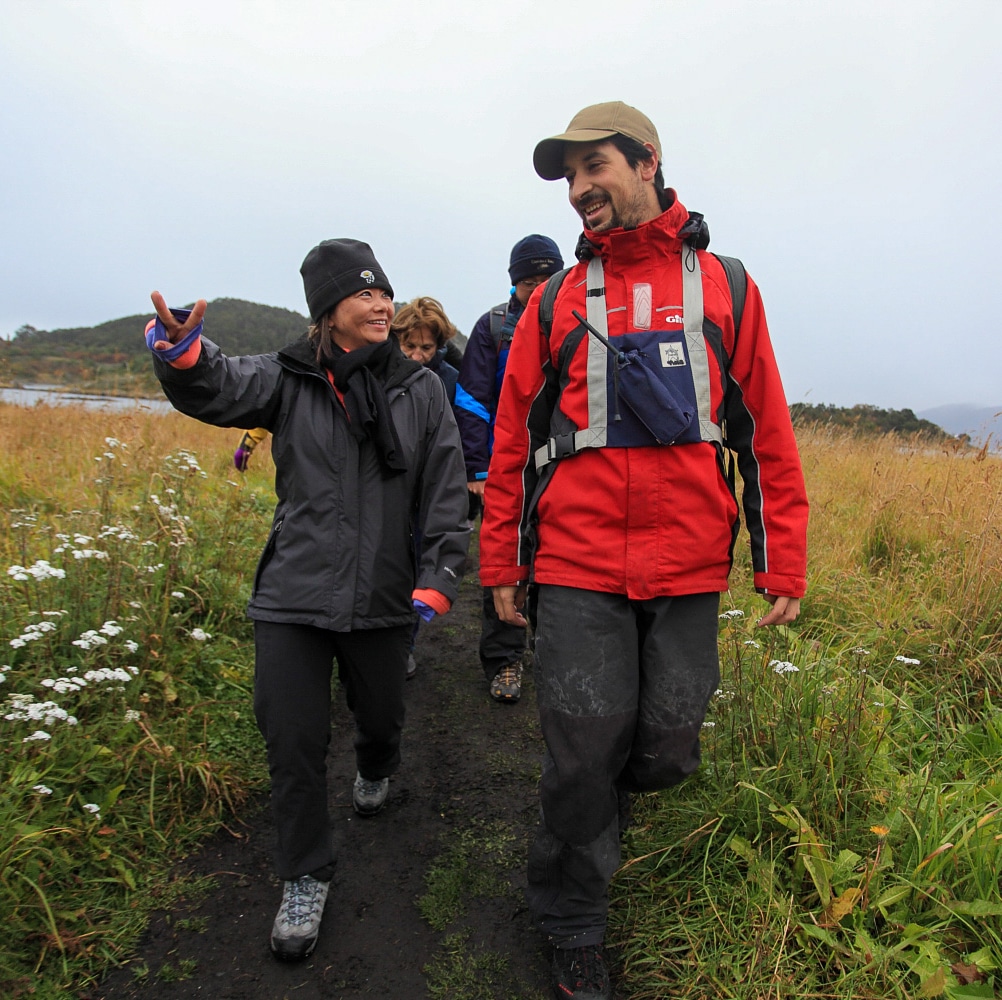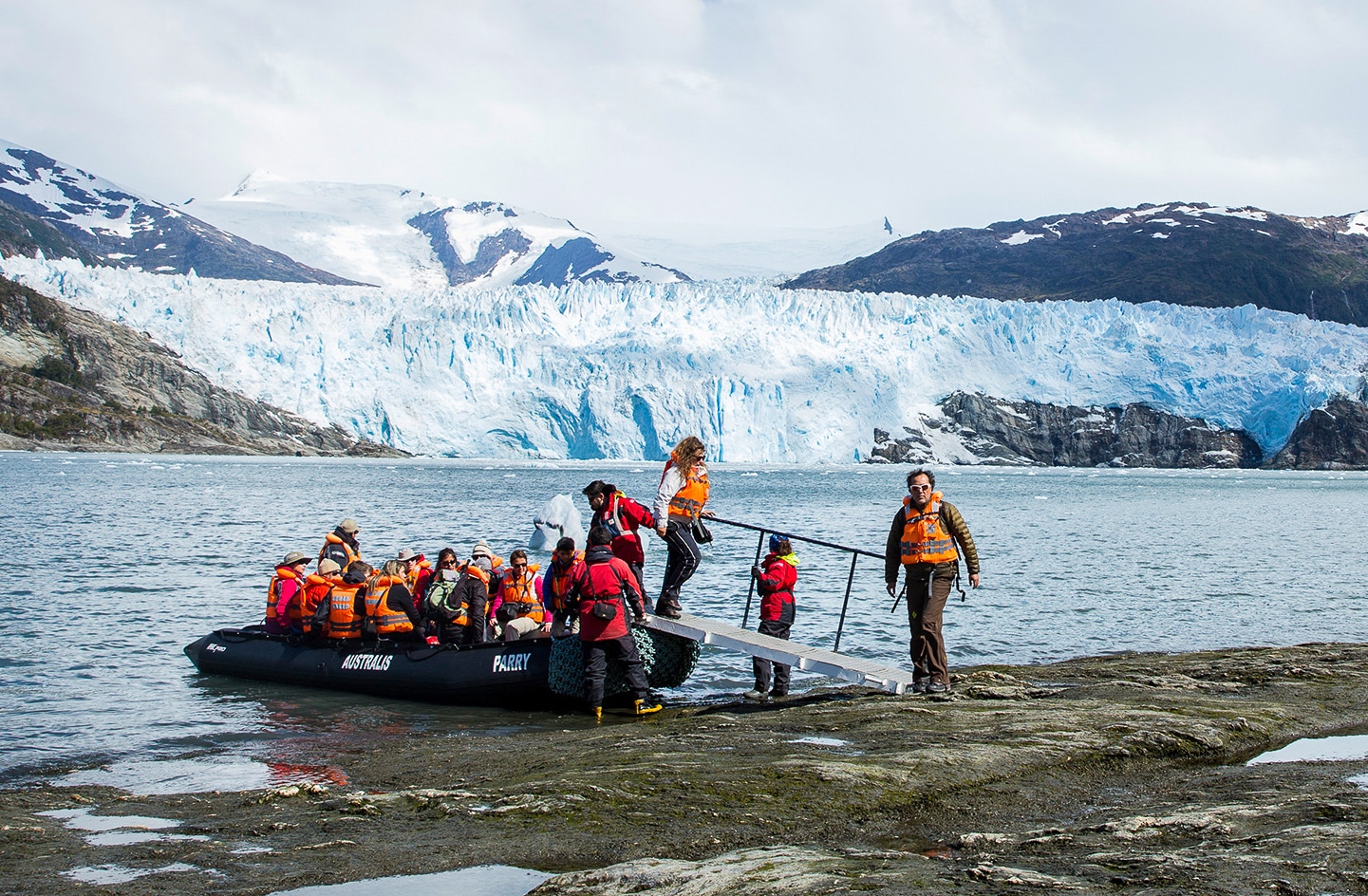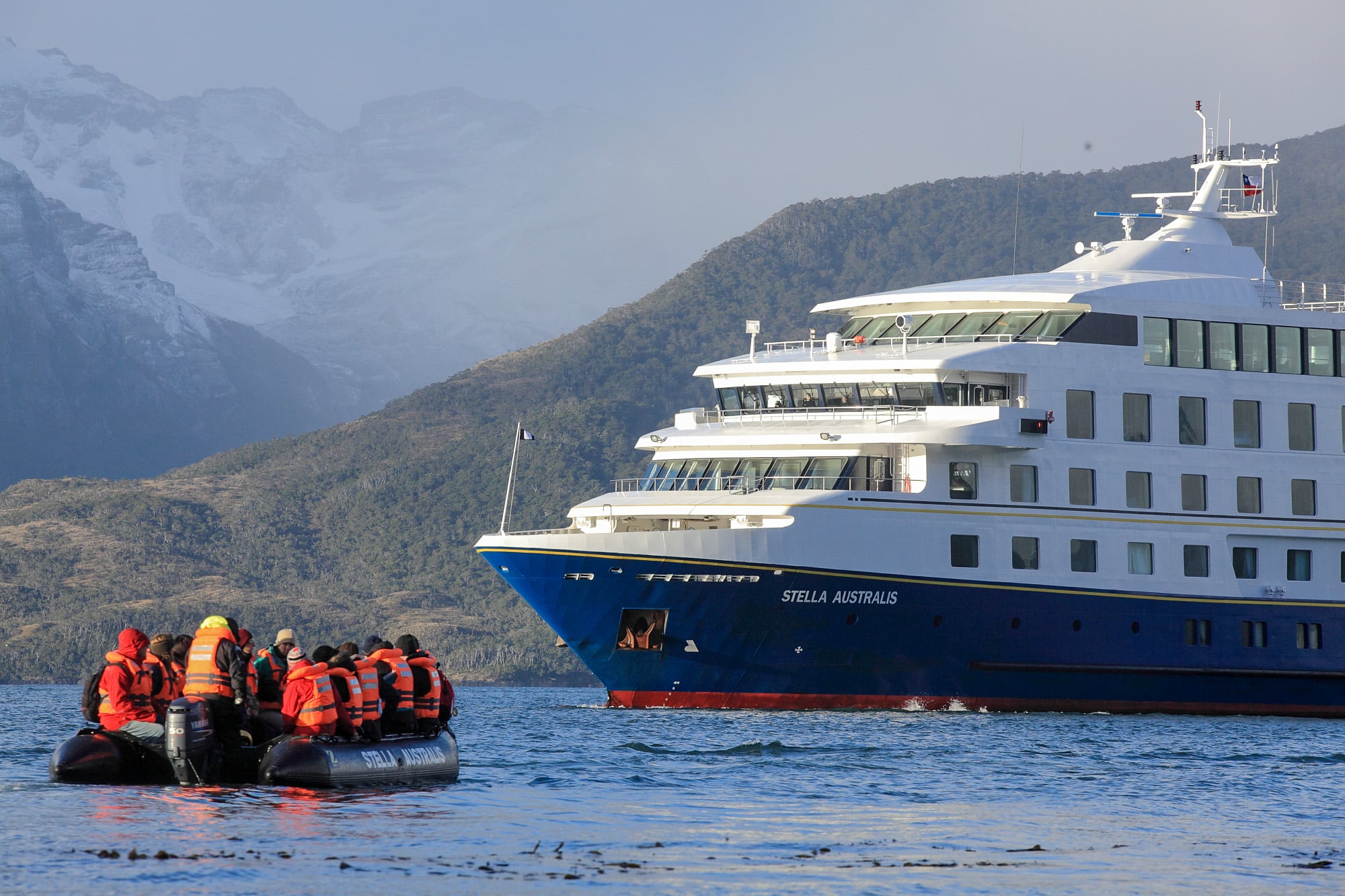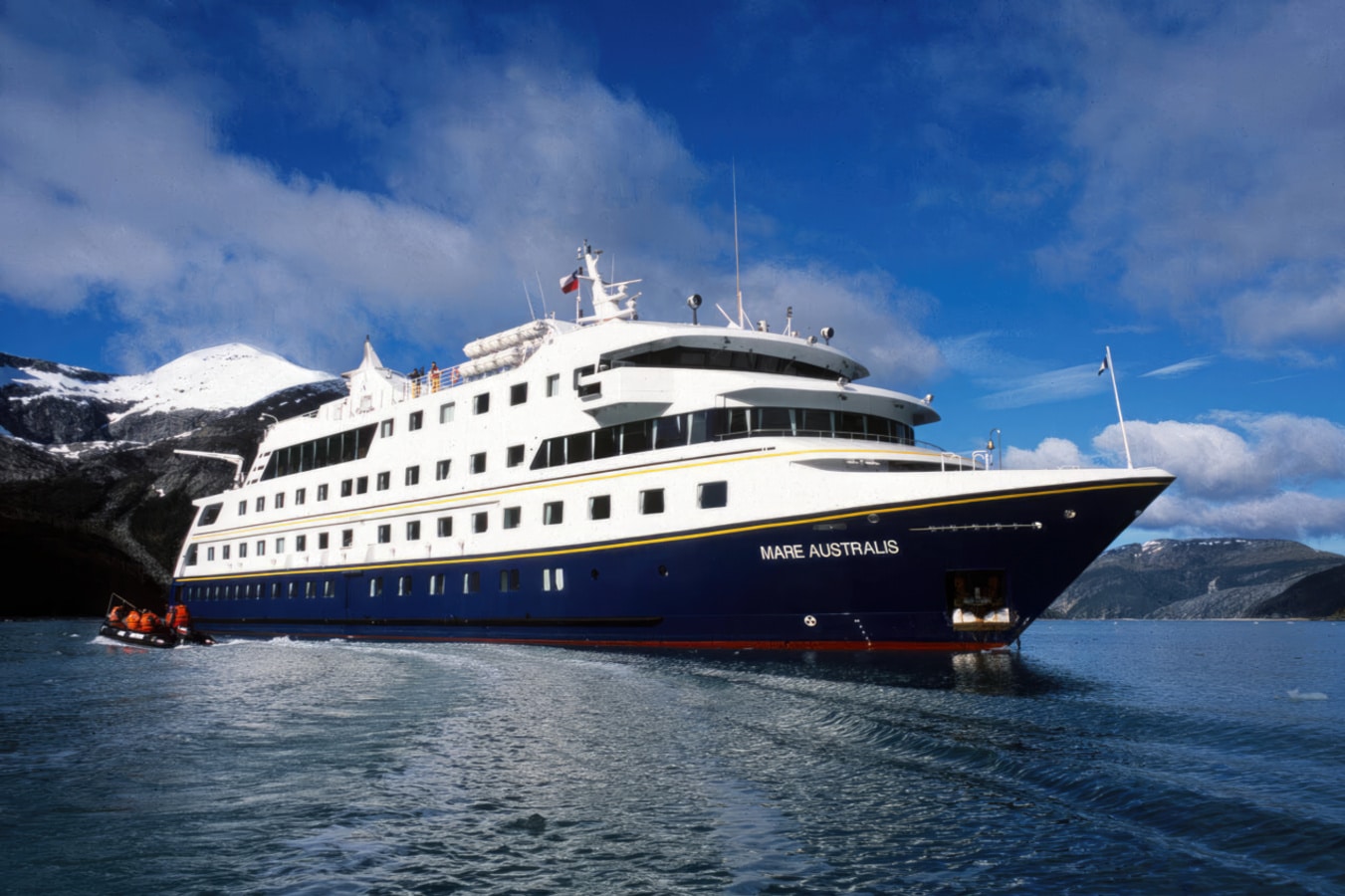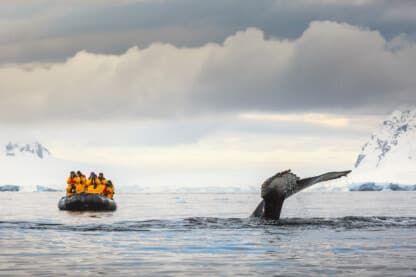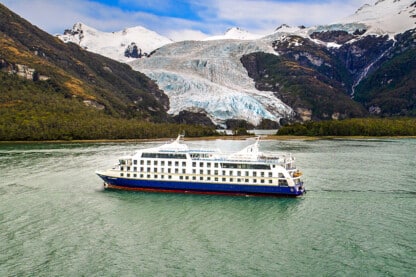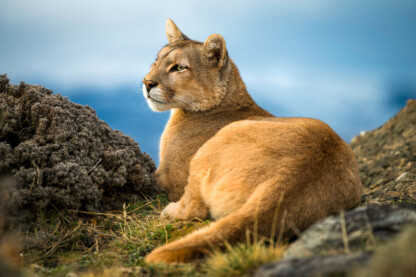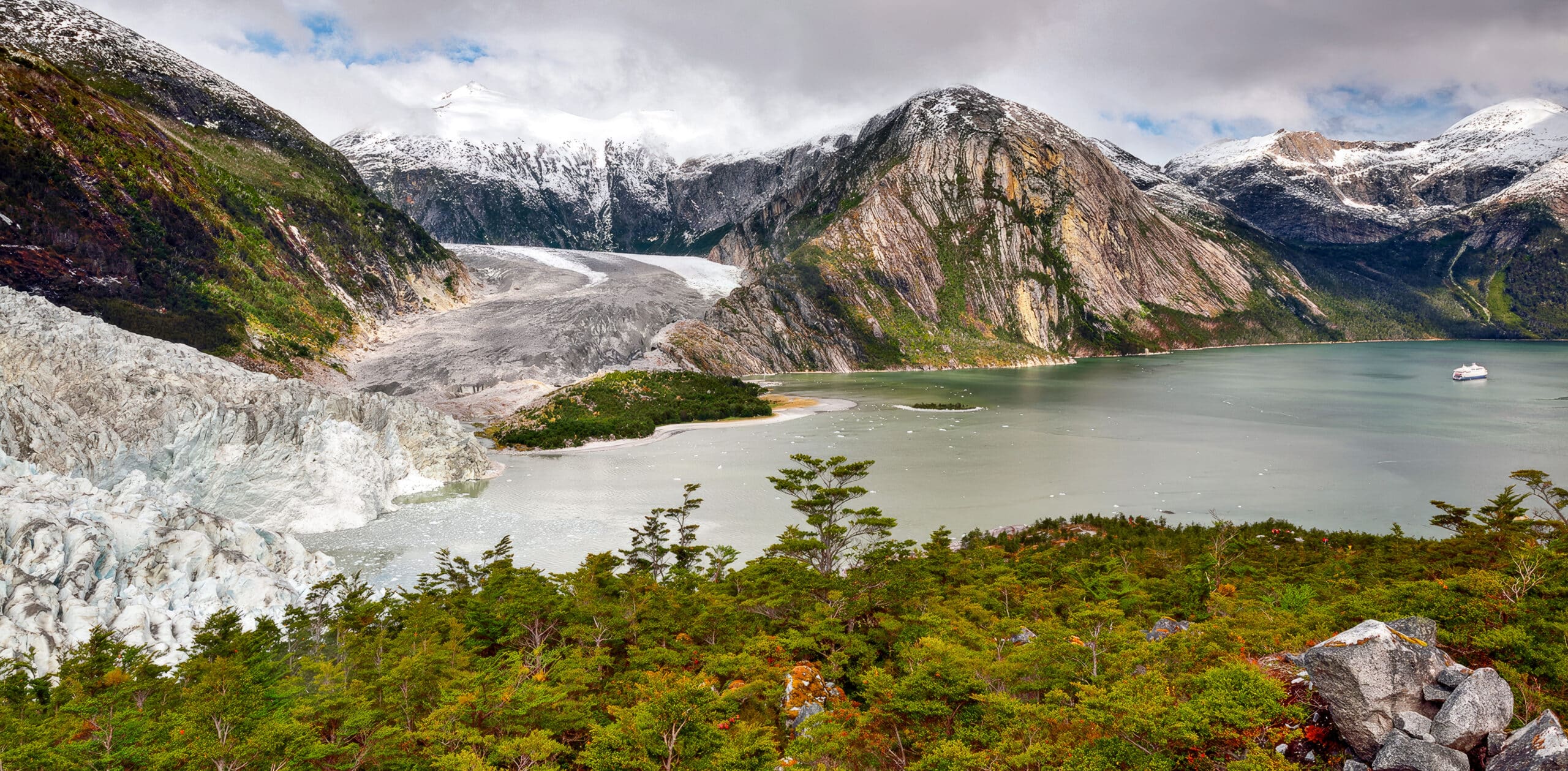
Fjords and Channels of Patagonia
Tierra del Fuego Cruise, Punta Arenas to Ushuaia
Offer Expires April 30, 2024
Overview
Explore Patagonia on an adventurous five-day journey from Punta Arenas to Ushuaia through some of the planet's most remote, untamed wilderness. From aboard an expedition ship that brings an extraordinary level of comfort and service to the uttermost edge of the world, witness fabled spots like Cape Horn, Wulaia Bay, and Beagle Channel. Sail through a maze of islands and visit icy blue glaciers—frozen giants that guard the southern flank of the Fuegian Archipelago, enter the legendary Strait of Magellan, and explore Isla Magdalena to view its impressive penguin colony. Whether from Zodiac or on foot, shore excursions will get you up close to witness the incredible range of wildlife that lives along these magnificent waterways.


Arrive: Punta Arenas, Chile
Depart: Ushuaia, Argentina
Highlights
- Explore several impressive tidewater glaciers on foot and by Zodiac
- Choose from easy or more challenging walks through magical forests to waterfalls and viewpoints
- Witness a wide array of wildlife from Magellanic penguins to South American sea lions
- Go ashore on legendary Cape Horn, weather and conditions permitting
Itinerary
Note: This trip is not exclusive to, nor operated by, Wilderness Travel, who acts solely as an agent in booking your reservation with the operator. Please download the Rate Sheet in the Dates & Pricing section to see the full pricing details and contact our Cruise Collection Specialists to check availability.
Accommodations
Scroll through our signature accommodations for this trip below. Although it is highly unlikely, we may make substitutions when necessary.
What the Trip is Like
The trip is rated Level 1+, Easy, and is appropriate for anyone in good health who is physically active. Zodiac landing crafts are used to explore the coastline and transport passengers ashore for walks to wildlife sanctuaries, glaciers, and local points of interest. There are several options for more challenging hikes. Some agility is required for getting in and out of the Zodiac landing crafts.
Other Trips You Might Like
Browse All TripsBook your trip today
Our Area Specialists know every detail about our tours. They will be happy to answer any questions and help you choose the journey that’s right for you. Contact us to learn more or book your trip today!
Itinerary
Submit the form below to download itinerary
Trip Levels
With more than 200 different adventures to choose from, we want to help you find the trip that’s right for you. Our Trip Level system ranks each trip in two ways: a number rating from 1 to 6 according to the activity, and general travel rigors. 1 is the easiest and 6+ the most difficult—see descriptions below for explanations of each number. A plus (+) sign means the trip is a bit more strenuous than other trips of that level. The detailed explanation of each trip—below the bar with the number rating—is perhaps more important, specifying activities, altitudes, hiking, and travel conditions. The Detailed Itinerary, available by download or mail, gives further information. Our Area Managers can also answer questions and guide you to the trip that best suits your interests.
Level 1 – Easiest
Non-camping journeys, optional walks, little elevation gain or loss.
Level 2 – Easy to Moderate
Hotel nights and/or safari-style camping, hikes of two to four hours on some days. Other physical activities are sometimes included, such as optional sea kayaking.
Level 3 – Moderate
Half- to full-day hikes (3-6 hours) over rolling countryside on most days, occasional steep trails. Many of our hotel-based walking tours are in this category, as are our snorkeling adventures.
- Tuscany & the Cinque Terre
- Argentina: Hikes and Estancias of Patagonia
- Palau Snorkeling & Sea Kayaking
- Some trips with minimal hiking but rugged travel conditions or long drives, such as Tribal Ghana, Togo & Benin, are Trip Level 3.
Level 4 – Moderate to Strenuous
Full-day hikes (4-6 hours), mountainous terrain, significant elevation gains and losses (hiking up or down as much as 3,000 feet) on many days. Altitudes no greater than about 10,000 feet.
Level 5 – Strenuous
Full-day hikes (4-8 hours), mountainous, steep terrain (hiking up or down as much as 3,500 feet) on many days. Trips with hiking at average altitudes of 10,000 to 12,000 feet are in this category.
Level 6 – Very Strenuous
Full-day hikes (5-8 hours), mountainous, steep terrain (hiking up or down as much as 3,500 feet) on many days. Most hikes take place at altitudes above 10,000 feet, with some days ascending as high as 18,000 feet.


